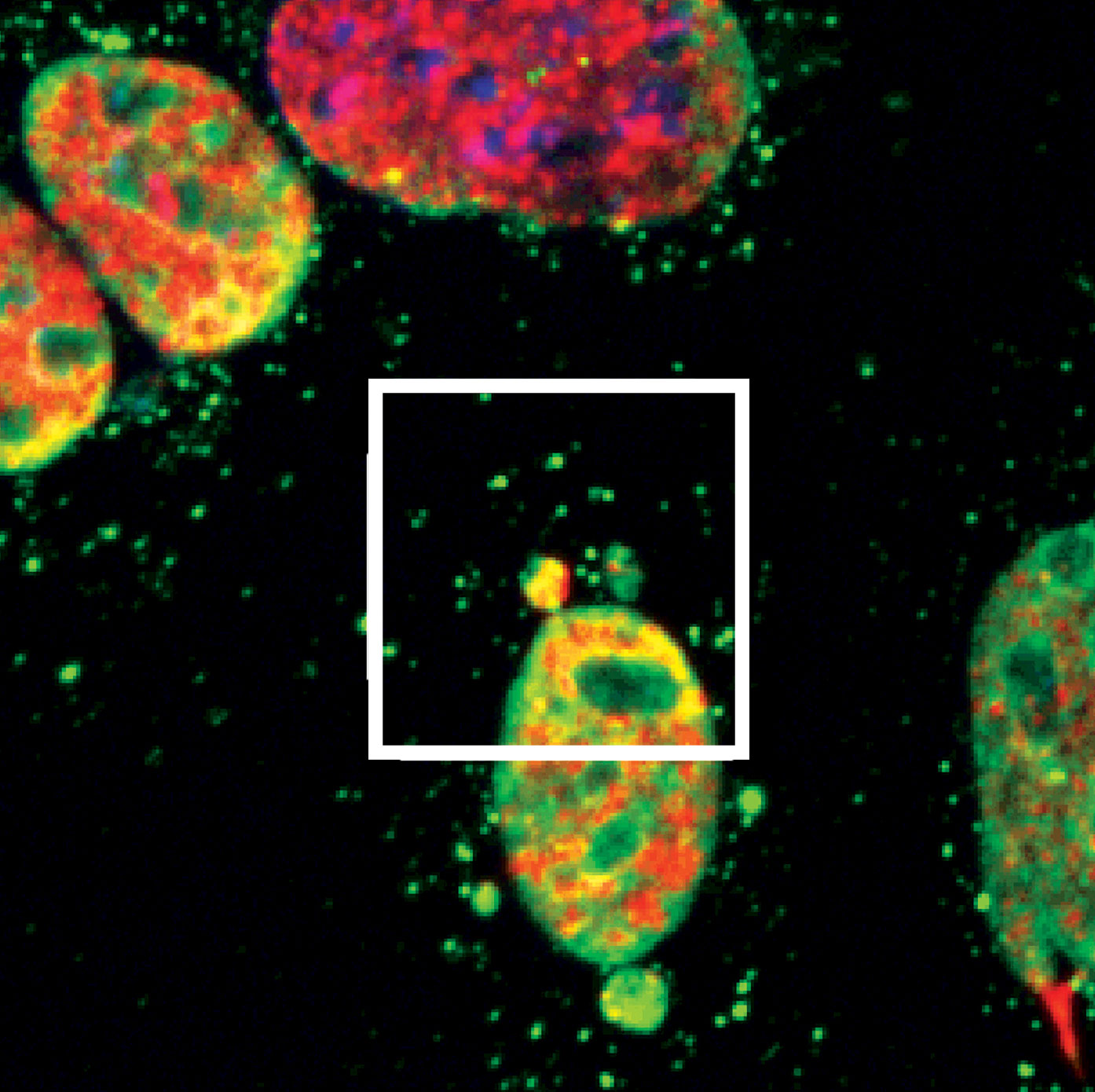Nucleic Acids and Innate Immunity
Gantier Group

The nuclei of fibroblasts DNA
Most people will know about DNA, and perhaps a little about RNA.
DNA and RNA constitute a class of molecules referred to as nucleic acids, which are essential to all forms of life known to date. They contain and access the genetic information that controls which cells do what in our bodies. Critically, because they are present in every form of life including bacteria and viruses, they are also essential for our immune system to detect infections.
Nucleic acids are the root cause of toxic inflammation in chronic diseases like lupus, or acute sepsis. Understanding how this operates is essential to identify potential drugs targeting inflammation driven by nucleic acids, aiming at providing novel therapeutic avenues to treat these diseases.
With several new nucleic acids-based therapies now approved for use in humans and to be widely rolled out in populations (as with inclisiran), understanding how synthetic nucleic acids can influence normal immune responses is important. This can also present new strategies to treat tumours, where immune responses are altered.
Finally, nucleic acids circulating in the blood present many advantages for disease detection and prognosis.
The Nucleic Acids and Innate Immunity Research group has made significant findings relevant to these themes – for instance describing how acriflavine, a century old antiseptic that binds DNA, can also induce immune responses protective against viruses.
Current research projects
- In line with our findings on acriflavine, the Nucleic Acids and Innate Immunity Research group is working to understand how cellular damage recruits immune responses and how nucleic acids are involved. The team is investigating the development of molecules that can be quickly repurposed as anti-inflammatory drugs to prevent chronic inflammation and sepsis (for instance to be used in the context of COVID-19 infections).
- Relying on more than 10 years’ expertise in synthetic nucleic acids, the team is also studying how such synthetic molecules could be designed to modulate immune responses, in cancer and auto-immune diseases.
- Finally, we are also working to define the role of microRNAs in the regulation of infection and immunity. We have a specific focus on mechanisms regulating microRNA stability, and how this knowledge can be used to create novel biomarkers of auto-inflammation and cancer.
If you are looking for a great workplace to carry out an honours, PhD or Masters project, please contact us to see how the team could help you make a lasting impact in your next scientific endeavour.
Diseases we research
Research Group Head | Associate Professor Michael Gantier
Treatments for autoimmune diseases such as lupus are often associated with multiple side-effects and a poor patient response. My research is harnessing the potential of RNA therapeutics, like those used in mRNA vaccines, to revolutionise autoimmune disease treatments, blocking disease at its source.

News from the lab
Student opportunities

Publication highlights






